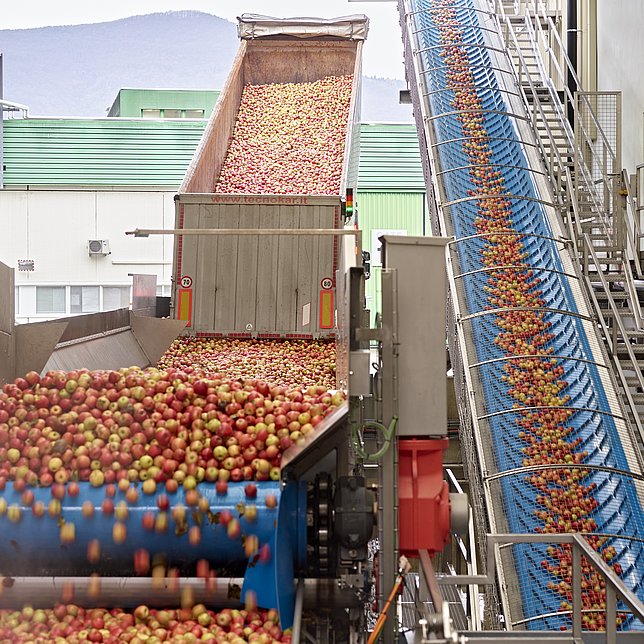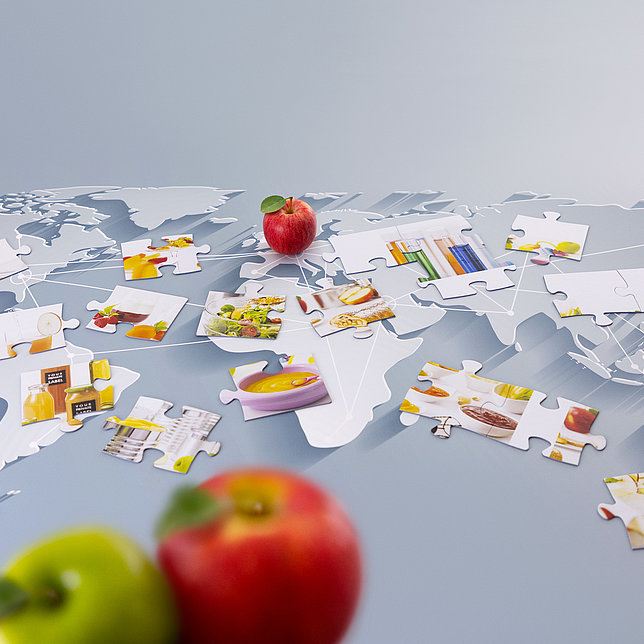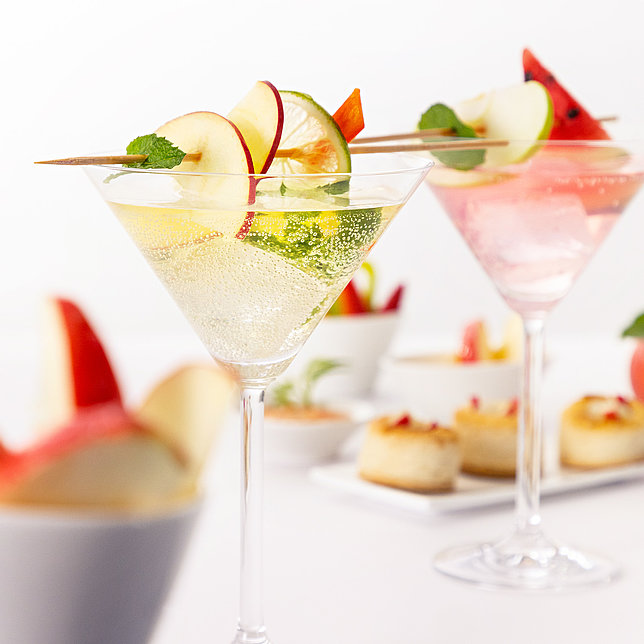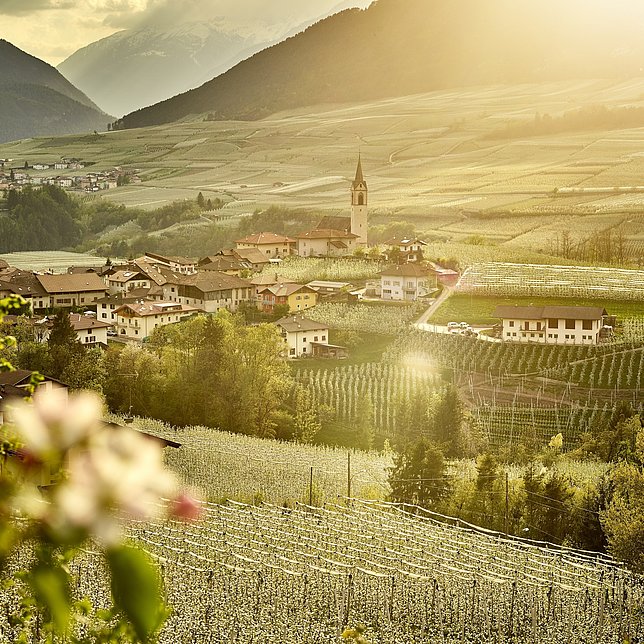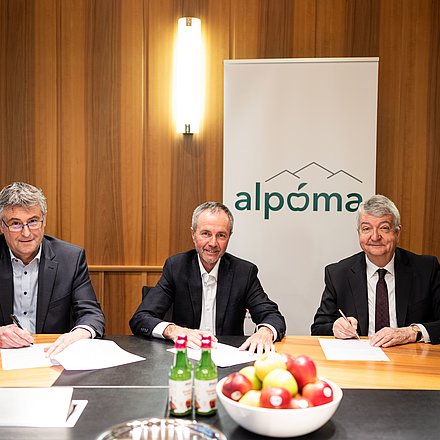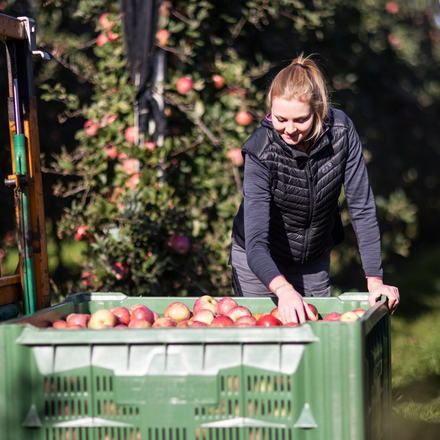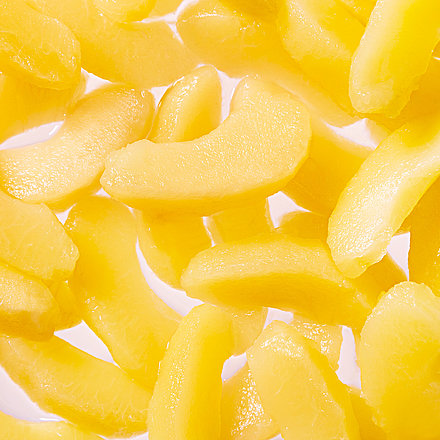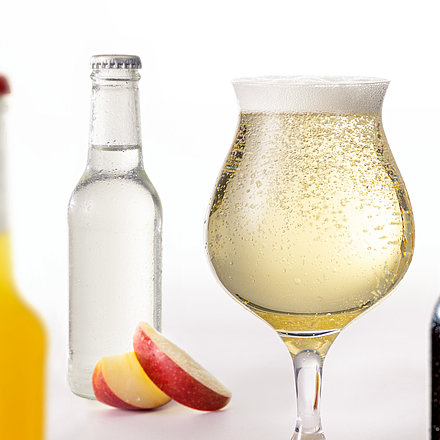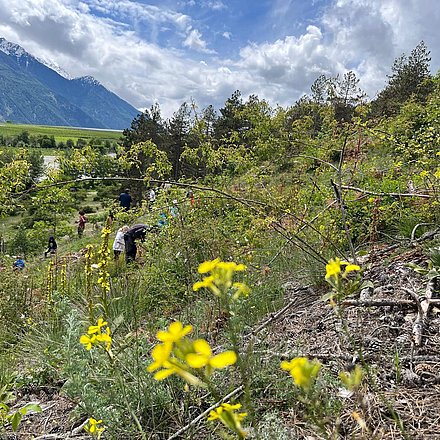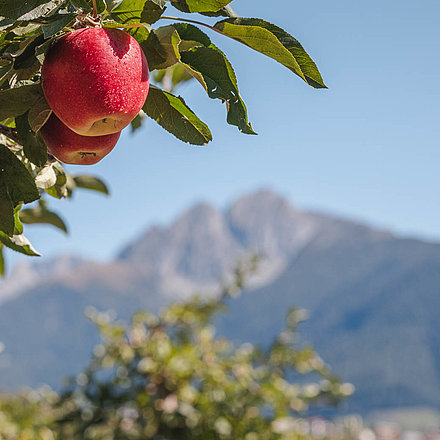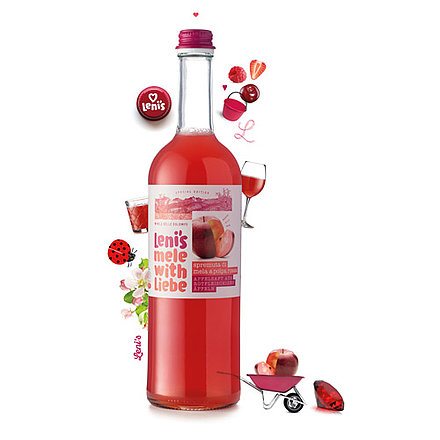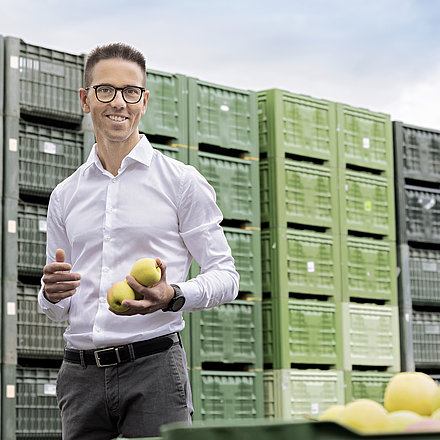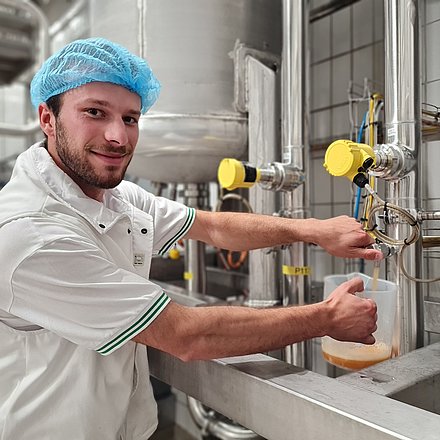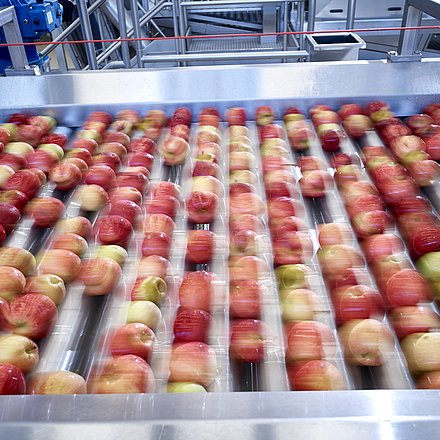Sustainable water management: our approach
Each year, VOG Products processes around 350,000 tonnes of apples into juice, puree and concentrate. Water is indispensable in the production process: it serves as cooling and transport water. The company not only uses it carefully, but also several times over.
Apple juice production is water-intensive: At VOG Products, water is the main means of transport for the millions of apples that are processed in Laives - and is also used as a coolant in the production process
"Double" water use: VOG Products saves 700,000 cubic metres of water per year
"We are very careful with water and reduce consumption wherever possible - because water is one of the key points of our sustainability strategy," says Christian Thaler, who, as technical manager, knows the company's water cycles better than anyone else. "We are making increasing progress with water management".
One important reason lies in a major improvement that the Laives company has tackled during the current financial year:
This involves a “double“ use of water. All water that is used in one of the central buildings for cooling (use 1) will be collected in a collection line, returned to a tank and distributed from there to the liquid production area, where the water will then be primarily used as transport water (use 2). The use as transport water represents a "water recycling" or a second use of the water.
"This saves us about 700,000 cubic metres of water per year - about as much water as 15,000 people use in one year," says Thaler.
Water vapour produced during concentrate production is also reused
The water vapour is produced during the production of concentrate. During the course of the steam heating, the water in the juice evaporates and is continuously drawn off. The re-condensed steam produces water vapour, which is also reused - a process that VOG Products has been using for many years.
There are similar optimisations for the post-rinsing of pipelines: "The water used in the post-rinsing of product pipelines is collected and reused in the next pre-rinsing. So water recycling takes place on many levels," says Thaler.
For Thaler, constant monitoring of water flows is just as important as recycling: "By monitoring the data coming from the flow meters, we are able to detect leaks early and avoid water losses as much as possible."
"Dry" transports on conveyor belts save water
And of course VOG Products is also keenly interested in reducing water-intensive processes.
At the new apple receiving station the apples are briefly rinsed and cleaned with water jets before they are gently conveyed "dry", i.e. on a belt (without water transport), to the automatic sorting system.
Water consumption will also be taken into account for future investments, because “each drop is valuable”, as Christian Thaler says.
Regardless of whether the water has been used for transport, cleaning or other purposes, it is filtered through self-cleaning screen filters at the end for wastewater pretreatment. These serve to separate solids from the industrial wastewater. The water then flows into the Branzoll Ecocenter wastewater treatment plant - where biogas is produced, which is then used to generate electricity and heat in the combined heat and power plant.
Water balance shows consumption - and where even more water can be saved
In the spring of 2022, VOG Products wanted to get a precise overview of the use and origin of water and created a so-called "water balance". The technical office has analysed the internal water cycles:
- the different types of water and
- the pipe network and
- the mechanical and electronic flow meters.
By doing so, an overview of the consumption data was created - and on the basis of this data, it becomes clear exactly where there is a need for action, and where the company can further reduce water consumption in the future.


